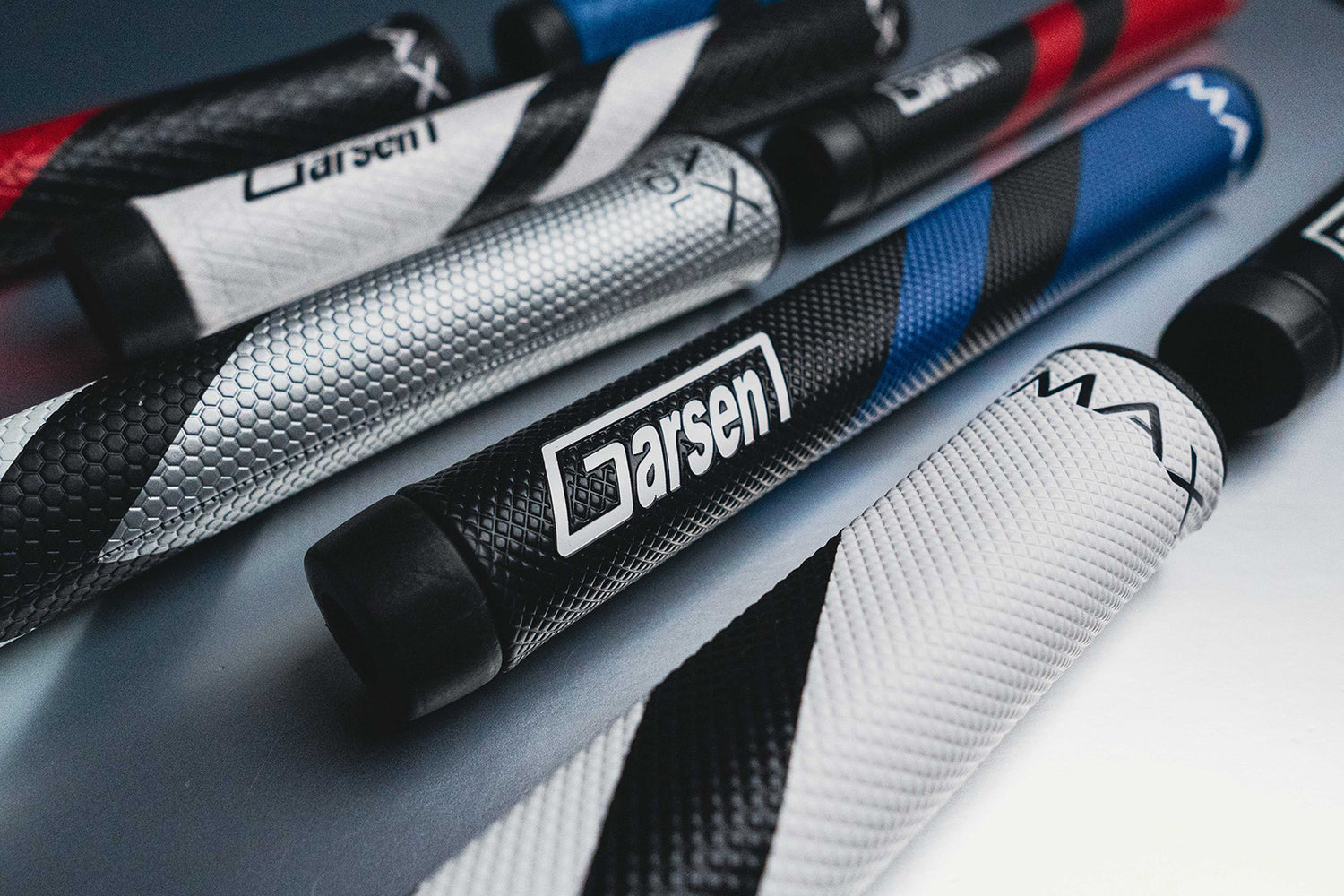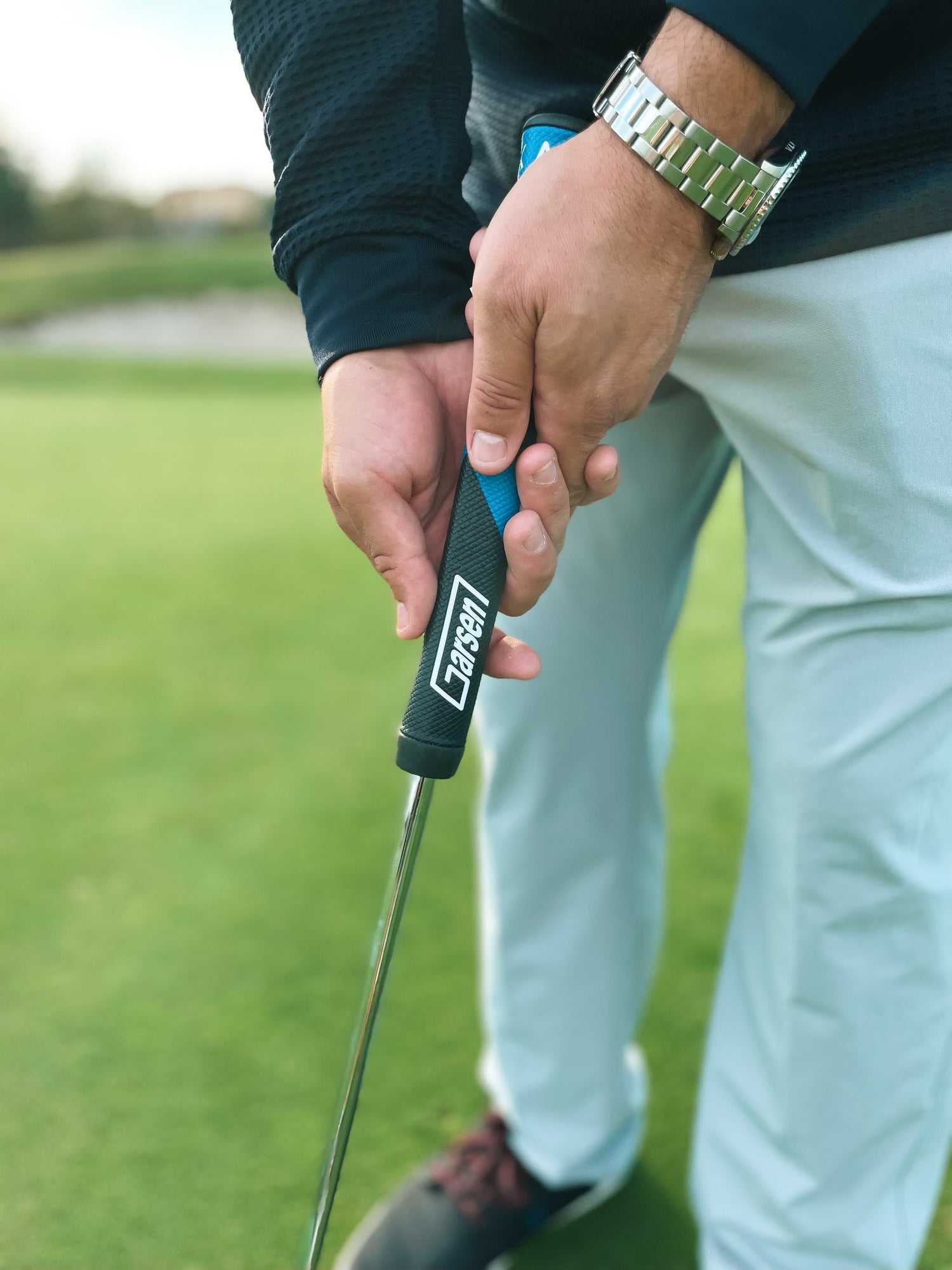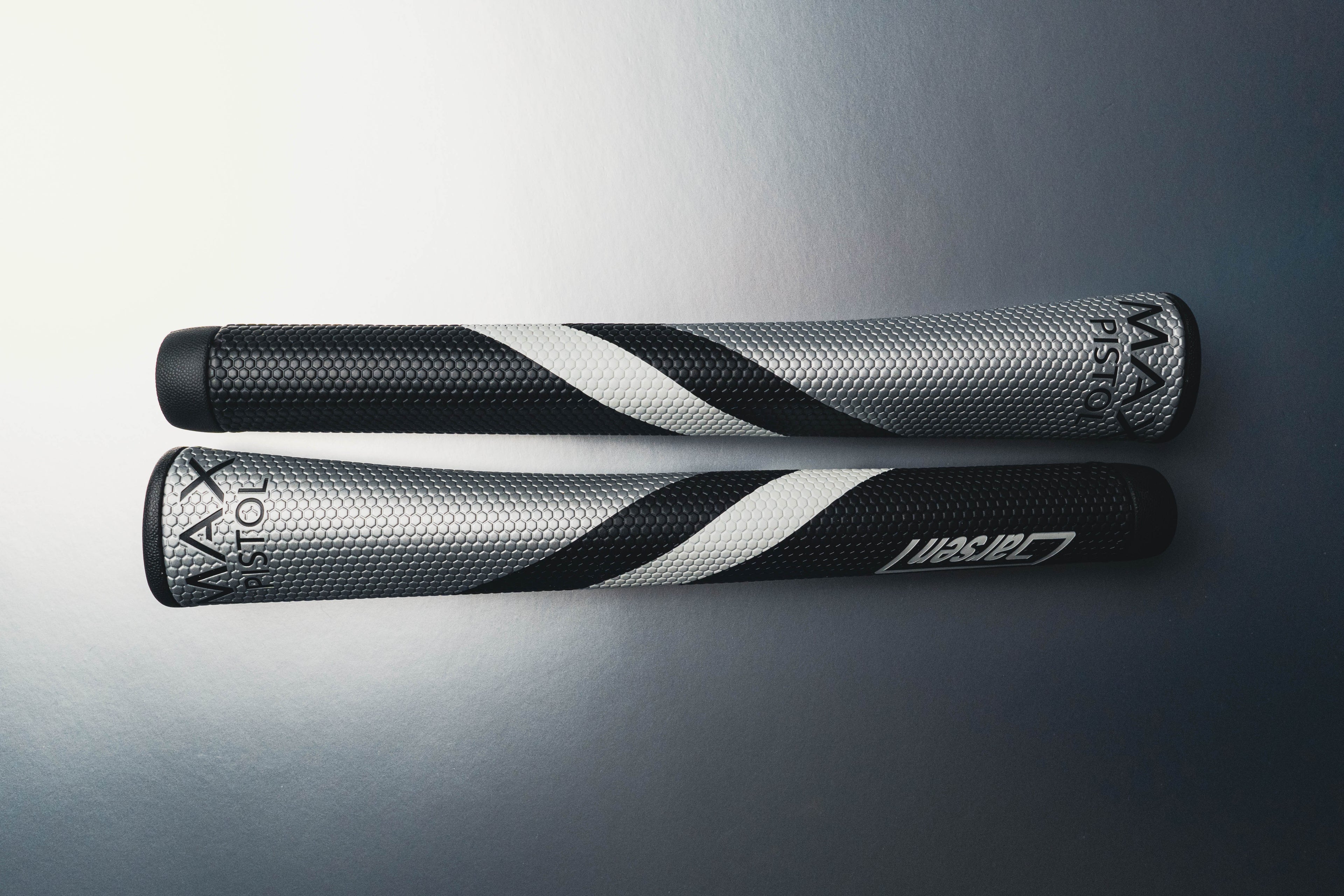Dr. Tyler Standifird
Associate Professor of Biomechanics At Utah Valley University
april 2022
PUTTING SURVEY
A survey of 135 golfers asking questions related to putting grips. 60% of those in the survey had a handicap that was below 10.
- Almost 90% reported that the grip on a putter does make a difference.
- Over 95% stated that the feel of the putter was the most important feature of the putter grip.

QUINTIC PUTTING STUDY
23 golfers participated in the study. Average handicap 12.7, average age of 39.8. These golfers averaged about 56 rounds of golf per year. The golfers filled out a survey both pre and post putting asking them questions about their own golf game and some subjective measurements related to the grips being studied. The study consisted of two different putter grips. The Garsen MAX grip and just a standard Odyssey putting grip. Two different putter head styles were used, a blade and mallet style. We used identical odyssey putter heads, one with the Garsen MAX grip and one with the standard odyssey grip. Each player would come to the lab, fill out a survey and then would get just 3 to 5 minutes of practice with the Garsen MAX after a brief instruction to the grip.
After that brief practice the players would all roll 3 putts at 3 different lengths along a 26 foot well putting mat. One short (about 4 feet), one medium (about 11 feet) and one long (about 22 feet). They would do this with either a blade or mallet style putter based on preference. Each golfer would go through 6 conditions (3 with the standard grip and 3 with the Garsen, at the lengths described earlier). Order was randomized. Proximity to the target was measured along with the output from Quintic (club face parameters and ball parameters). For the Quintic measurements we took the average and standard deviation to determine both accuracy and consistency with the 6 different conditions. We compared the Garsen to the standard grip for each of the 3 length putts.

SURVEY RESULTS
Proximity to Hole
The Garsen condition on the longer putt, led to an average distance that was 7 inches closer to the hole compared to the standard grip.
Grip Feel
The Garsen grip was reported as having better feel in the putting stroke. On a scale of -5 to +5. Zero being the same feel as the standard grip, -5 being worse than the standard and +5 being better than standard. The Garsen measured +2.4 points better for feel compared to the standard.
Quintic Measurements
Attack Angle – (Ideally this should be between .5 and 1.5) Shortest putt the attack angle with the Garsen was .8 standard was .14 (Garsen in the ideal range, standard not)
Longest putt - the attack angle with the Garsen was positive while the standard was negative (Again Garsen ideal and standard not)
Face Angle – Deviation of 2 degrees will miss a hole from 5 feet, 1 degree miss at 8 feet and .5 degree miss at 15 feet.
Longest putt – The standard deviation of the 3 putts was almost twice as large (.4 degrees larger) with the standard putter grip compared to the Garsen. This shows that the Garsen putter grip led to much more consistent face angles at impact.
Face rotation – Speed at which the club face is opening/closing. Garsen Putter grip was more consistent for the longer putts (Smaller Standard deviation)
Twist at Impact – can measure a bit related to centeredness of strike for this. Garsen a lot better on the medium length putts for the raw value, 45% smaller value. Also was better on the standard deviation of this value for the long putts (showing greater consistency).
Ball Speed and Club Speed – Club speed again can be another important measurement of consistency and tied in with the ball speed as well. Want these to be as consistent as possible for the same length putts. All standard deviations were decreased with the Garsen putter grip compared to the standard for these variables. For the longer putt the club speed consistency improved by .12 MPH or 38% more consistent. For the medium putt it was .04 MPH, but that amounted to 23% more consistency.
Impact Ratio – Think of this like the smash factor for putting. Shows the consistency of the strike. Again the focus here is on the standard deviation values. Shorter and longer Putts led to more consistency in this variable (reduced standard deviation) with the Garsen compared to the standard grip.
Launch Angle – Launch angle of the golf ball, can be different depending on green speeds and distance. This is another one of those it is probably important to look at the consistency between trials. Medium putt here had the real differences, it was an increase in consistency of .23 degrees for this angle Garsen compared to Standard.
Side Spin – Anything that is under 20 works for this variable, preference would be even under 10. All conditions and lengths had values under 10 for this. The largest difference in the standard deviation was for the medium length putt, where the Garsen grip had 30% less side spin than the standard. About 3 rpm less deviation.
Zero Skid – Should be achieved at 10 to 20% of the putt length to help ball stay on line. All conditions achieved zero skid in the time that they should. The standard deviations of the zero skid were the most different for the longer putt, as the Garsen putter grip led to more consistent length to zero skid by almost 40%.
Summary
The main summary is that the Garsen Max grip led to more improvements than the standard grip. This was in both some of the raw values and also in the consistency of the values. It was interesting to see improvements in both subjective measurements and also the objective measurements. This was accomplished after only 3 to 5 minutes of practice with this novel grip.
The Garsen putter grip led to a better angle of the club face in both directions, how much they hit up or down on the ball and also if the club face is pointed towards their intended target. The up or down angle is important to get the ball rolling sooner in the putt so that it will move on its intended line, the club face also being pointed at the intended line is very important for a player to get a ball consistently started on their intended line.
The attack angle became more positive with the Garsen Grip. Golfers hit up a little bit more on the ball, causing a little more top spin and creating that spin earlier in the putt. As a result the putt doesn't skid as much but instead starts rolling right away to get it to start and stay on line.
The face angle of the putter was much more consistent with the Garsen putter grip. This means that over the course of multiple putts, the garsen grip helped the player to deliver the same face angle and movement of the putter head at and through impact. This helps them to be confident that they are starting the ball on their intended line more consistently than a standard putter grip.
These two measurements really create a situation that lead to putts starting on the intended line much more consistently than a standard putting grip.


